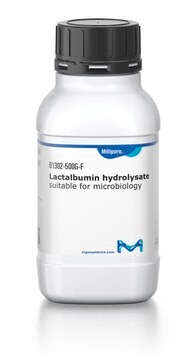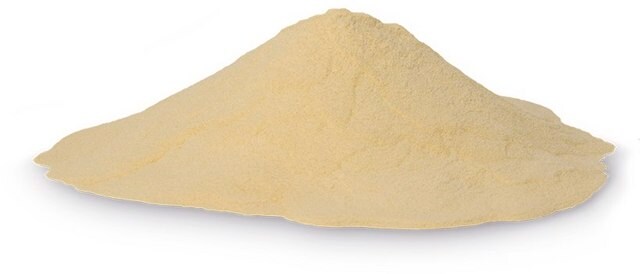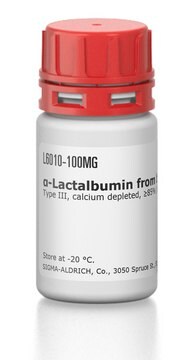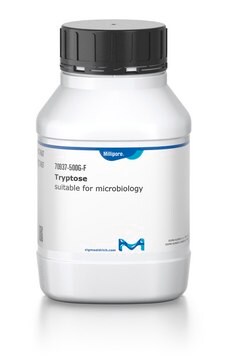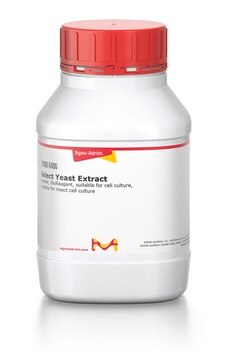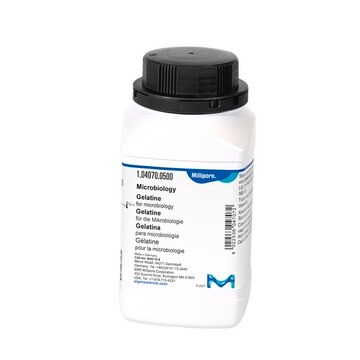61300
Lactalbumin Peptone for Biotechnology and Microbiology
Encymatically Digested, for Biotechnology and Microbiology
Synonym(s):
Animal origin peptone, hydrolyzed protein, Peptone from lactalbumin
About This Item
Recommended Products
Product Name
Lactalbumin hydrolysate, suitable for microbiology, Nutrient for fermentations and other applications
biological source
bovine milk
Quality Level
form
powder
shelf life
limited shelf life, expiry date on the label
composition
total nitrogen (N), ≥11%
storage condition
dry at room temperature
ign. residue
≤10%
loss
≤6% loss on drying
pH
6.8±0.5 (25 °C, 2% in H2O)
solubility
H2O: 2%, clear to very faintly turbid (light yellow to yellow and light brown-yellow to brown-yellow and light brown to brown)
application(s)
food and beverages
microbiology
Looking for similar products? Visit Product Comparison Guide
General description
Application
In the production of recombinant proteins
As a supplement in mammalian cell culture media
As a substrate for growth of many microbes
Other Notes
Storage Class Code
11 - Combustible Solids
WGK
WGK 3
Flash Point(F)
Not applicable
Flash Point(C)
Not applicable
Personal Protective Equipment
Choose from one of the most recent versions:
Already Own This Product?
Find documentation for the products that you have recently purchased in the Document Library.
Customers Also Viewed
Our team of scientists has experience in all areas of research including Life Science, Material Science, Chemical Synthesis, Chromatography, Analytical and many others.
Contact Technical Service